"All across the world, we have helped growers create sustainable, energy-efficient commercial greenhouses in a wide range of climates. While you can't choose your climate, many commercial greenhouse growers have options when it comes to the location and orientation of their greenhouse," says Haley Bridgnell, Marketing Strategist at Ceres Greenhouse Solutions. The Ceres team explains that several factors go into a good greenhouse site, such as solar aspect, shading, zoning, wind, and access to water and electricity.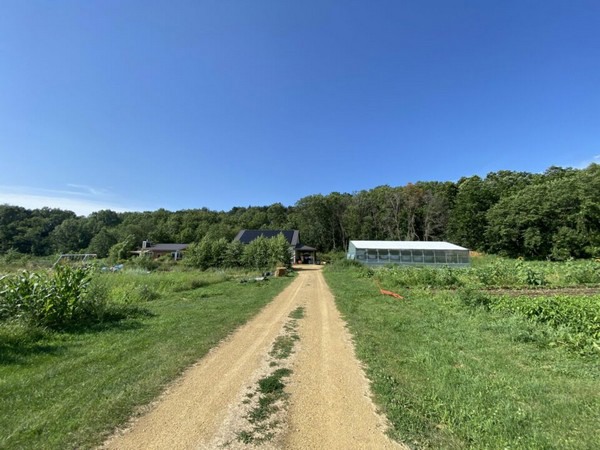
Disqualifying siting factors
First, let's start with examples of site requirements that would disqualify a property from being eligible for greenhouse construction. "For example, roads to the site are not wide and strong enough (incl. bridges) for heavy trucks transporting building materials. Also, not having appropriate power available or at least reasonably attainable. Another issue would be not having access to an ample water supply. However, water quality is not as important because it can be adjusted with treatment processes. Sufficient internet access and satellite connection are also important." 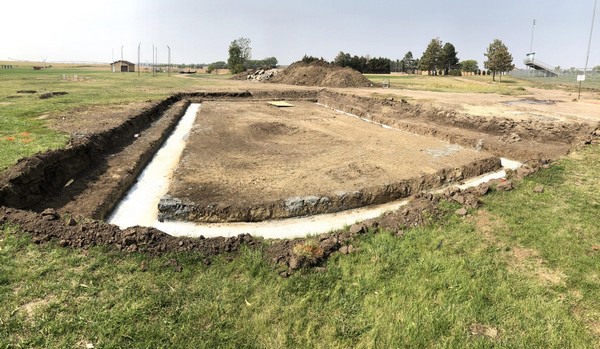
If you're weighing your options
Ceres explains that there are factors that should help you lean one way or the other if considering more than one commercial greenhouse site. "First of all, shading/percentage of sunny hours at any time of the year. Reviewing potential shading is super important and can vary significantly, especially in mountainous and forested areas. Also, the driving distance for employees to commute to the greenhouse site. If it is excessive (more than 1 hr), you will struggle to maintain growers and support staff. This is a major issue if you want to grow successfully. You should also consider how far away your greenhouse is from the market. It might be worth paying more for a property if it's closer to your distributors, retail outlets, or customers."
What if the ground at the site is not completely flat? "If there is more than 5 ft (1.5m) between any lengths or diagonals of the greenhouse, it will cost more money to excavate and level the greenhouse site. For a larger facility, 'fixing' a slope of 15 ft could cost upwards of $50/sqft. Also, power lines going through the property could affect your building height."
When it comes to the environment, the wind is an important factor. "Lots of wind at your site increases the cost of the structure (more steel) and potentially creates more wear on your glazing. Also, you will want to get an evaluation of whether or not the property is in a flood zone. Choose a property that will not easily be flooded." When growing cannabis, the property's proximity to neighbors should also be taken into account, as odors can be a problem for nearby residents.
"If you are interested in installing solar panels but want to be space-efficient on your primary licensed site, it may be advantageous to look for a greenhouse site that is surrounded by the less expensive neighboring property to install your solar array next door. This will allow you to max out your primary property with greenhouse space. You may also consider a property with access to net metering. This means access to a system in which your solar panels are connected to a public utility power grid, and surplus electricity is transferred onto the grid, allowing you to offset the cost of power drawn from the utility. Also, some utility providers offer rebates, some don't, so choosing a site serviced by a provider that offers rebates can save hundreds of thousands of dollars," the Ceres team explains.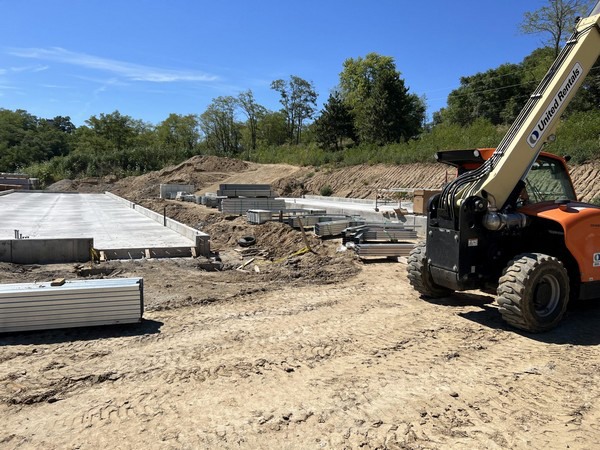
Siting factors that can be designed for
Yet some siting issues can be overcome with the help of a design and engineering team, Ceres says. "When it comes to hail, how often and how big will significantly affect what glazing you should choose. If freezing rain is an issue in your area, an engineer can factor this into your roof loads and equipment specification. We can also help if we know the frequency and longevity of power outages in the area. If power outages usually only last a few hours in your area, Ceres can easily configure them into your engineering. If outages can last up to a day or more, your site may require backup power generation. For outages lasting up to a week or more, you will need significant backup equipment (full backup power) that can add significantly to the overall capital expenditure."
"If there is water running through any part of the building site, can the water be diverted to other more favorable locations? Can the water be collected? This can potentially be a very expensive site preparation and cause danger in flooding events. If there are seismic restrictions on the property, high seismic loads mean higher structural and engineering costs. If you don't have a natural gas connection, we have design and engineering solutions for you. For example, our SunChamber facilities can run 100% on electricity."
Evaluate light by season
"Building orientation is probably the most significant siting factor, particularly if growing year-round in an energy-efficient greenhouse," Ceres says. "If located in climates with moderate to harsh winters, appropriate solar exposure is essential for sufficient growth and passive solar heating. If the site is shaded in the winter, it can result in lost production or more expensive lighting bills. In contrast, in the summer, some shading is usually inconsequential and even benefits the greenhouse by reducing summer heat gain, preventing overheating depending on the cultivar. Many growers simply turn to shade cloth and cooling strategies to help keep the greenhouse cool in the summer."
There are several ways to evaluate light levels at your site. "Maps and weather sites like NREL can give you an idea of total light levels in your region. From there, you can get more site-specific, evaluating anything that can shade the greenhouse (called obstructions), such as buildings or nearby trees. If there are nearby obstructions, we recommend predicting their effect on the greenhouse. Several methods can do this, such as using trigonometry and a sketch of surrounding objects. A tool called a Solar Pathfinder is another possibility, as is having a greenhouse designer or engineer model your site and predict shadows – one of the many greenhouse consulting services we offer at Ceres."
Below is an example of a shade analysis for a Ceres HighYield Kit greenhouse in the winter and summer. "This design software allows us to use a simulation to identify the best positioning and orientation for your greenhouse, taking into account all the nearby possible obstructions."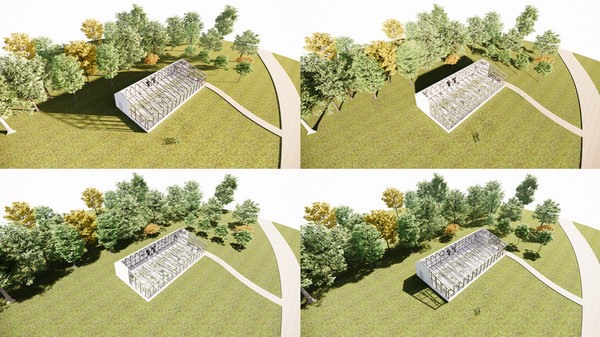
Light meters are another option, but usually challenging to give a full picture of light levels throughout the year. "With a light meter, you are directly measuring real-time light levels. They only measure the light intensity or light levels at a single point in time. That requires a data logger or taking several readings to get a full picture of light at your site since daily shifts in light can be huge. These devices range from cheap and simple to advanced and very expensive."
Get to know permit stakeholders
Zoning regulations are an obvious factor in choosing a site. "Typically, a commercial greenhouse site must be zoned commercial or as agricultural land. In urban areas, there may be some added flexibility for zones, as many cities are amending laws to encourage small-scale urban farms. Urban sites often come with added regulation, though, when it comes to the planning and design of the project."
After you identify that a site will allow a commercial greenhouse, Ceres recommends speaking directly with key stakeholders when applying for a building permit. "Talking to regulators– whether zoning commissioners, a land use department, or a building department – can help identify their key concerns and how to answer their questions. Keep in mind that many key stakeholders – permit officials, for example – may be unfamiliar with commercial greenhouses. At Ceres, we commonly see initial concerns regarding energy usage, durability, and quality of materials, all of which can be assuaged with some education on how our greenhouses are built. For example, commissioners are often surprised to know that commercial greenhouses can be energy-efficient. Addressing these concerns early on helps streamline the permitting process."
Ensure water and electricity availability
Both are essential to energy-efficient commercial greenhouses, or any commercial structure for that matter. "We recommend speaking directly to your local utility about electric hook-up when evaluating a site if it is not already there. This can be an expensive recourse if the utility is not willing to pay for it. It involves bringing out electric lines to the site. Determining what voltages are needed is also key to the planning stage. Most commercial greenhouses require 480V 3 phase power, which isn't available at all sites and can be expensive to bring to a site where it isn't already available."
Even if grid power is accessible, many growers add solar panels for other reasons. "Combined with passive solar greenhouse design, solar panels can create a net-zero energy commercial greenhouse that reduces operational costs and promotes a business' environmental commitments. It's important to realize, though, that they also dramatically influence the budget (though financing is possible)."
Evaluate proximity to market
How close are you to your customers, retail outlets, or distributors? "This is often less of a crucial factor for many large-scale operations. It does come into consideration for smaller commercial growers who may be selling directly to the end user (e.g., farmers markets or CSAs) or to a few retailers/restaurants. For example, a client recently approached us about building a large-scale commercial cannabis greenhouse in Washington. Due to regulations on the crop, they could only sell directly to retailers, requiring a complicated delivery chain. Their choices were to locate a greenhouse in a more urban area, closer to retailers, or locate the greenhouse further away. While the urban site was a more expensive build-out, the savings from avoided transportation justified the additional upfront cost."
"The availability of local labor should also be considered, as it's important for employee success and retention."
"For most commercial greenhouses, distribution is not a make or break factor in a site but should be anticipated when planning the business. How much this plays into your siting decision is a factor that depends on your marketing and distribution strategy, which varies by operation."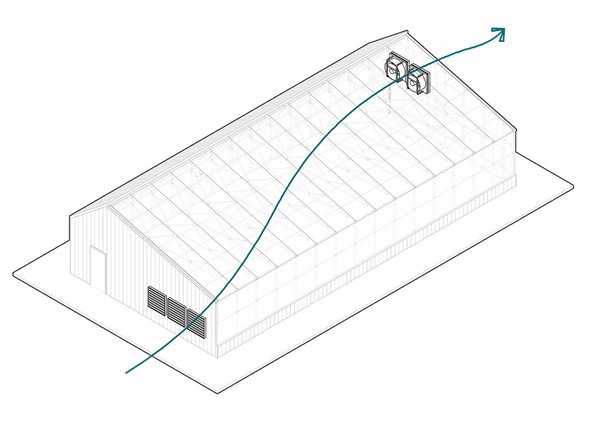
Avoid windy sites
An ideal greenhouse site is protected from strong winds, Ceres says. "Winds increase wear and tear on the structure, adding maintenance or possibly reducing its lifetime. Vents are particularly susceptible to the 'sail effect' — being torn off in strong gusts."
Winds also increase the structural loads on the greenhouse frame, mandating stronger roof framing. "This, in turn, can add to cost if wind loads are significant. For example, Ceres designed and built a commercial cannabis greenhouse in Leadville, Colorado – a site with 120 mph gusts. The structure required heavy gauge steel I-beams rated for high wind loads. A super energy-efficient greenhouse, in the end, the wind loads, were a major factor in the commercial greenhouse design and engineering."
A final deterrent is that winds ultimately increase the rate of heat loss through a year-round greenhouse. "They both add to air infiltration (cold air blowing into the structure) and create pressure differentials around the building. Differences in pressure, in turn, increase air movement, making a year-round greenhouse less energy-efficient in the winter. Often, winds are simply a fact of life for a commercial greenhouse site. Regardless of the weather in your area, Ceres will engineer your greenhouse structure to your local wind loads."
For more information:
Ceres Greenhouse Solutions
www.cerescann.com
